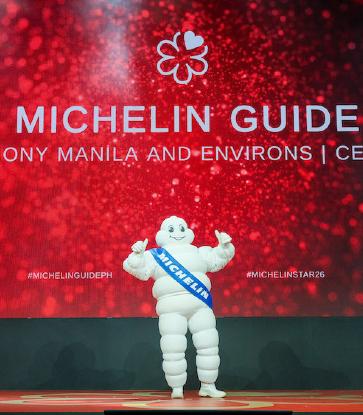Much has been written and speculated about the actual job itself—the famously anonymous MICHELIN Guide inspectors, how they work, and how they assess restaurants. We know this thanks in large part to overheard conversations at restaurants, where patrons and staffers theorize about our methods. I recall a woman asking her companion, “How does one even get trained for that job?” In that moment I couldn’t help but smile to myself, while blending into the background. Yes, camouflage is an art I have come to master.
It was difficult to fathom what my life would look like as I commenced this unique role, charged with discovering and confirming the best restaurants in the country, and potentially, around the world. I was filled with an unprecedented sense of anticipation upon finally receiving our “secret” office address the night before my first day. After my initial set of interviews, I had unwittingly looked for apartments in the area where my first meeting was held. Upon realizing that our office was nowhere close and that I had in fact been given a fake address for the interview, my foresight certainly seemed less than extraordinary.
If meeting my colleagues—who I’d always wondered about from afar—wasn’t thrilling enough, there was a group lunch on the first day, where I was introduced to the team. What followed next was eating out in the real world while applying the Guide’s methodology. My job as an inspector is to evaluate a meal based on quality of products, harmony of flavors, mastery of technique, personality of the chef in the cuisine, and consistency between visits. I then summarize my culinary experiences in a detailed report. On yet another occasion, I recall being asked about my food dislikes, to which I replied “tofu.” I've certainly come a long way since then, and am proud to tout mapo tofu as an all-time favorite indulgence.

Contrary to popular belief, we do not begin by dining at the world’s best. In fact, my first meals included everything from a shopping arcade noodle shop in Chinatown to a wine bar offering small plates. Experiencing such a diverse range of cuisines helped me establish and identify the baseline of our global benchmarks. As we discussed the merits of each meal, it was becoming amply evident how the Guides offer its readers a selection—not a directory—of restaurants. To ensure a wholly comprehensive training process, I would “shadow” more senior inspectors on their visits. If you’re thinking blind date, you know what I’m talking about; imagine dining with a veritable stranger over multiple hours as opposed to merely grabbing a coffee. Furthermore, I was instructed on how to gracefully apply subterfuge when engaging in small talk that inevitably leads to the ubiquitous "What do you do?". "I'm a consultant." I was also taught how to book a table under an alias, set up email account(s), coordinate my travel plans, and arrange reservations for those seemingly impossible-to-score spots. Another crucial aspect of the training involves time spent abroad learning from our European veterans. Overall, it is a systematic and logical approach, aimed at imparting the expertise of a far more experienced palate.

Several years in and the realities of this job are as inspiring as I dreamed they would be. Like all other professions, being an inspector has its challenges. Life can be lonely as you’re often on the road, friendships may suffer, and being shrouded in secrecy can feel unnatural. Yet the joy and satisfaction are unparalleled.
Hero image by MStudioImages/iStock

















